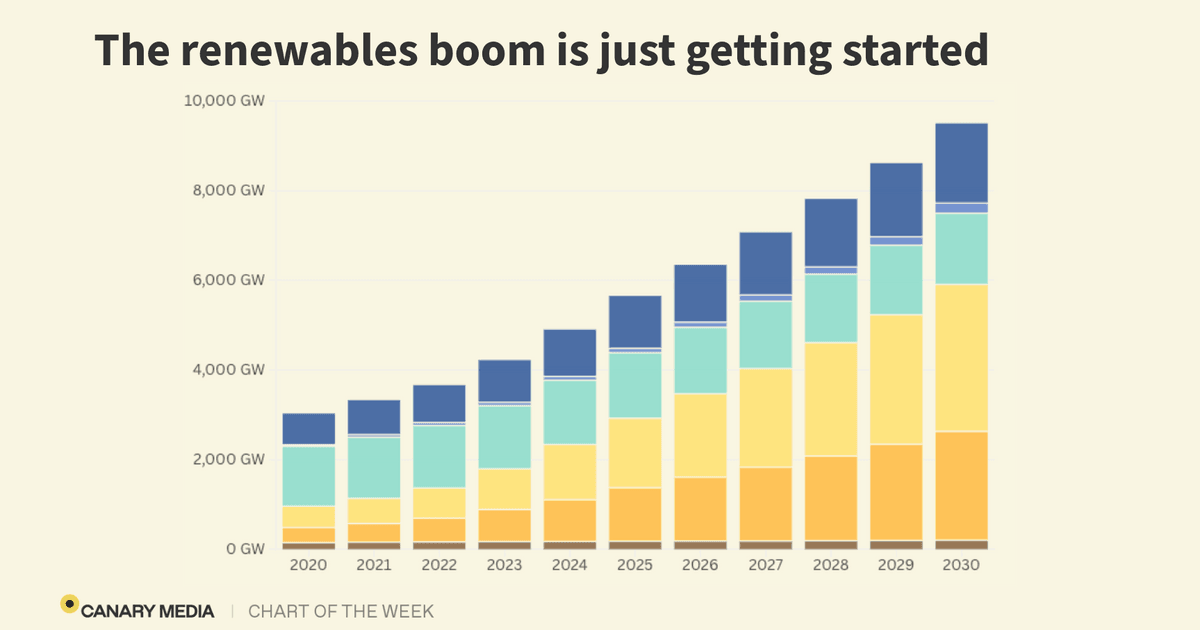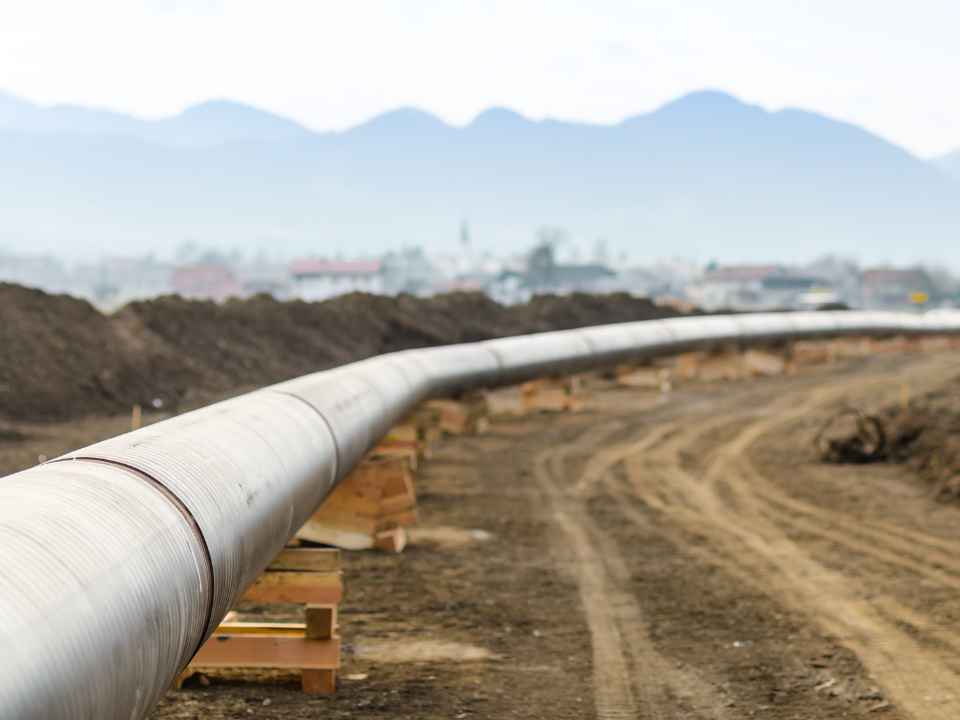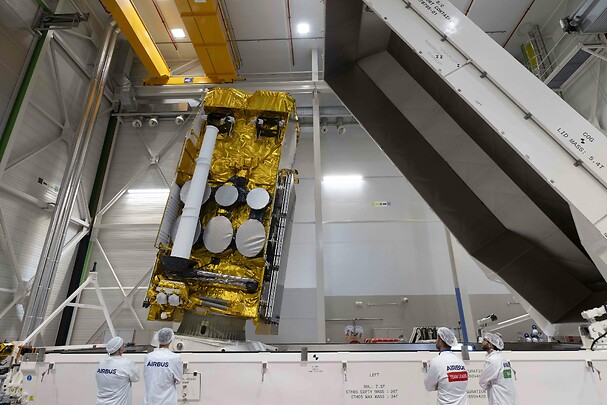Between 2025 and 2030, the world is expected to build nearly 4,600 gigawatts — or 4.6 terawatts, if you please — of clean power, according to a new report from the International Energy Agency.
That’s nearly double the amount built over the previous five-year period, which was in turn more than double the amount built across the five years before that. Put differently, the growth has essentially been exponential.
Solar is the driving force behind this expansion, which is key to transitioning the world away from planet-warming fossil fuels. It accounts for more than three-quarters of the expected increase in renewables between 2025 and 2030 — the result, IEA says, of not only low equipment costs but also solid permitting rules and a broad social acceptance of the tech.
This solar boom will be almost equally split between utility-scale installations and distributed projects, meaning panels atop roofs or shade structures in parking lots, for example. Just over 2 TW of large-scale projects will be built compared to 1.5 TW of the smaller, distributed stuff, IEA predicts. The latter category is increasingly popular both in countries with rising electricity rates and in places with unreliable grids, like Pakistan, where residents are taking refuge in the affordable and stable nature of the tech.







